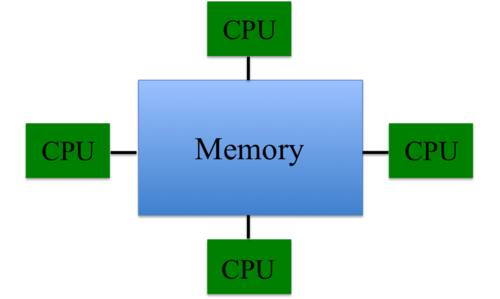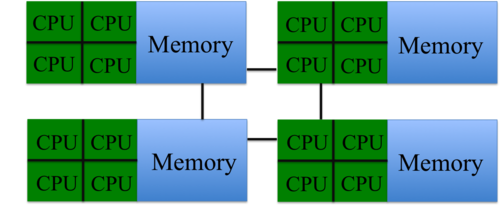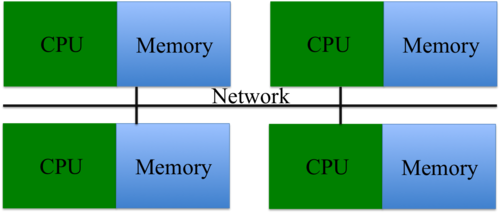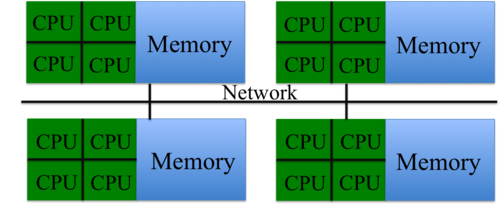Memory: Shared vs Distributed
Back to Parallel Computing
Shared memory is the memory which all the processors can access. In hardware point of view it means all the processors have direct access to the common physical memory through bus based (usually using wires) access. These processors can work independently while they all access the same memory. Any change in the variables stored in the memory is visible by all processors because at any given moment all they see is a copy or picture of entire variables stored in the memory and they can directly address and access the same logical memory locations regardless of where the physical memory actually exists.
Uniform Memory Access (UMA):
- Most commonly represented today by Symmetric Multiprocessor (SMP) machines
- Identical processors
- Equal access and access times to memory
- Sometimes called CC-UMA - Cache Coherent UMA. Cache coherent means if one processor updates a location in shared memory, all the other processors know about the update. Cache coherency is accomplished at the hardware level.
Non-Uniform Memory Access (NUMA):
- Often made by physically linking two or more SMPs
- One SMP can directly access memory of another SMP
- Not all processors have equal access time to all memories
- Memory access across link is slower
- If cache coherency is maintained, then may also be called CC-NUMA - Cache Coherent NUMA
Distributed Memory
Distributed memory in hardware sense, refers to the case where the processors can access other processor's memory only through network. In software sense, it means each processor only can see local machine memory directly and should use communications through network to access memory of the other processors.
Hybrid
Combination of the two kinds of memory is what usually is used in today's fast supercomputers. The hybrid memory system is basically a network of shared memories. Within each shades component, the memory is accessible to all the cpus, and in addition, they can access the tasks and information stored on other units through the network.



